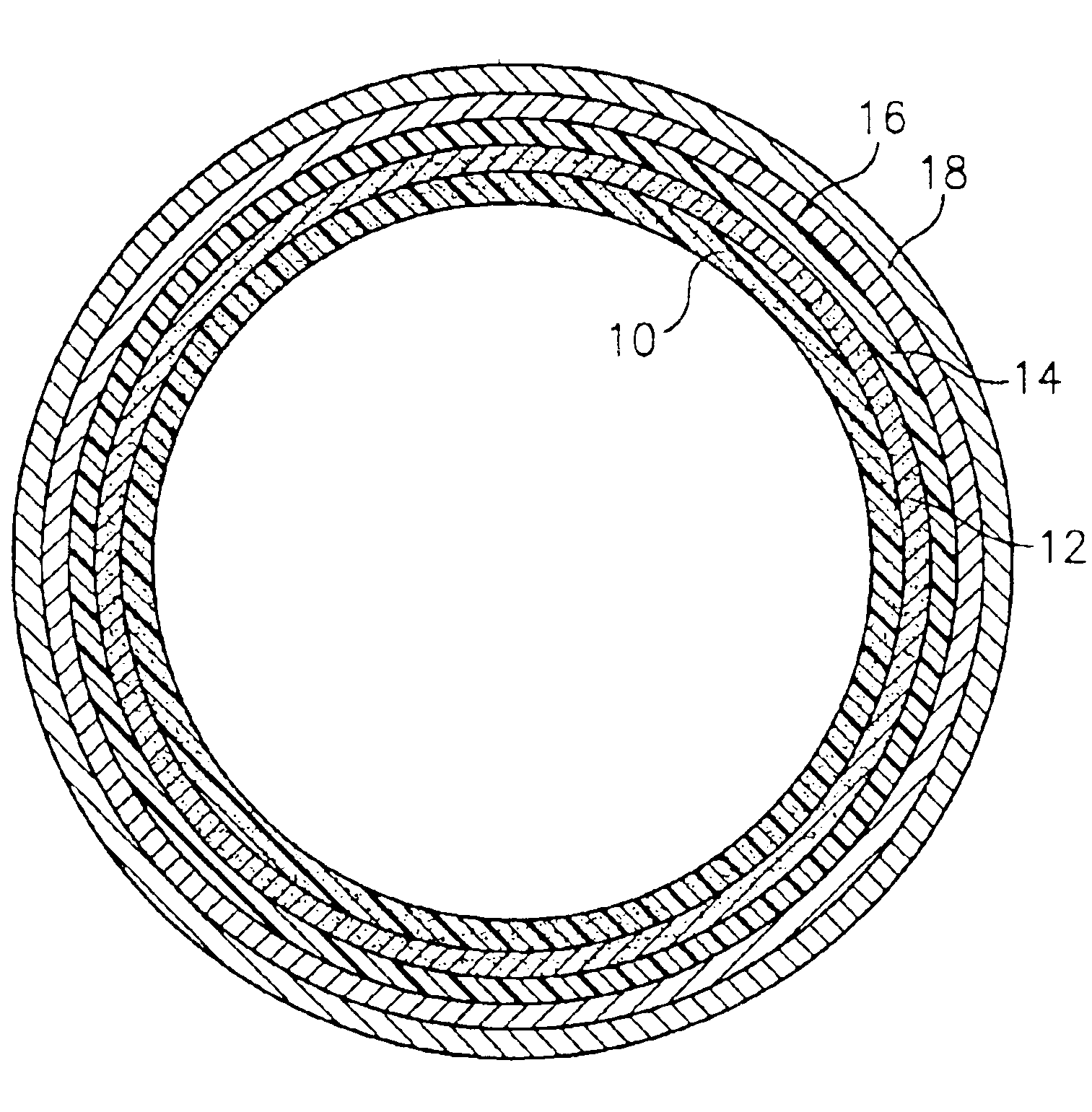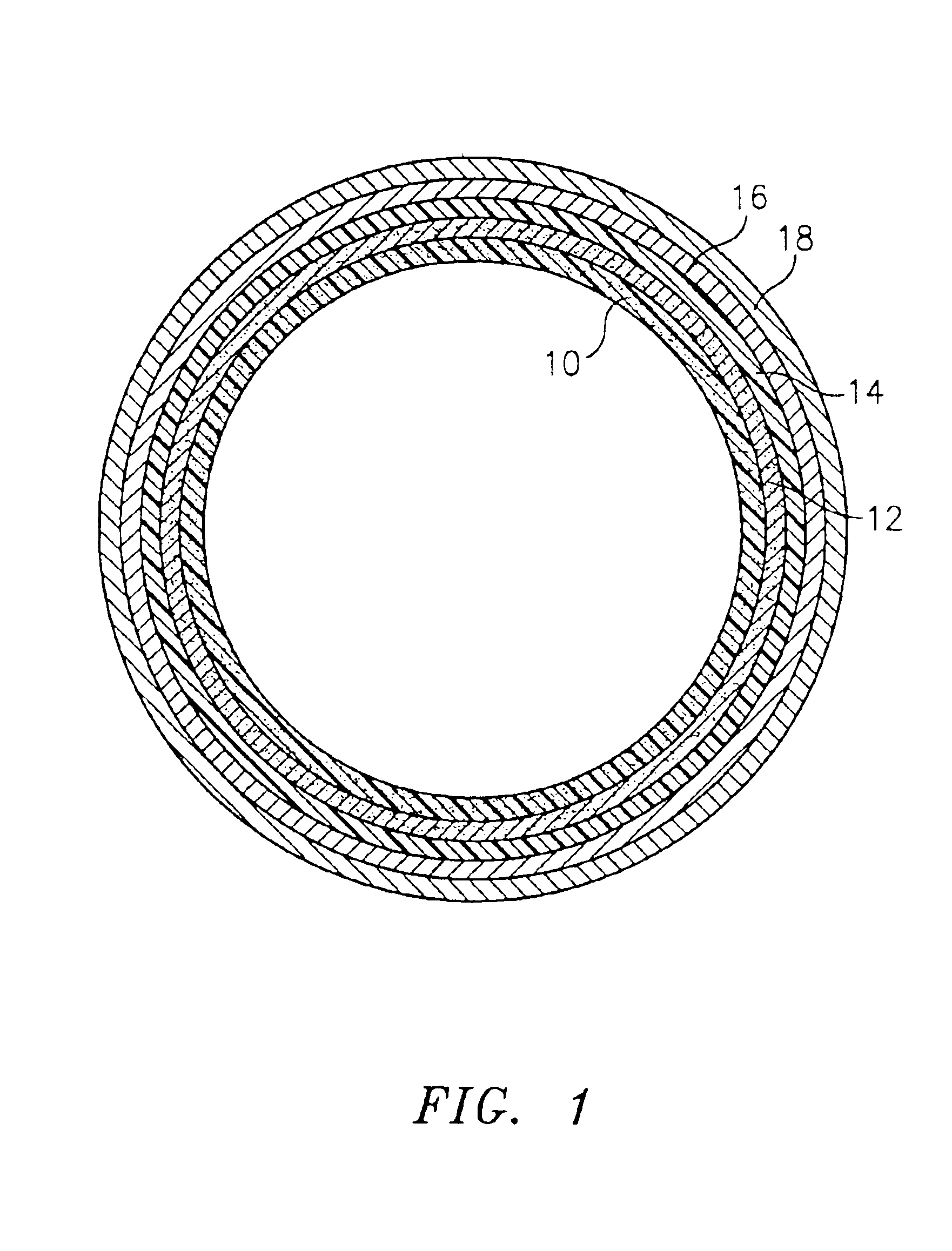Printing sleeve with an integrated printing surface
a printing sleeve and printing surface technology, applied in the direction of foil printing, photomechanical equipment, instruments, etc., can solve the problems of long seamexTM process, high labor intensity, and high labor intensity, and achieve excellent quality and improve the adhesion of the imageable surfa
- Summary
- Abstract
- Description
- Claims
- Application Information
AI Technical Summary
Benefits of technology
Problems solved by technology
Method used
Image
Examples
example i
[0042]The mandrel is inspected for imperfections or defects and thoroughly cleaned. A mold release is applied to the mandrel and pre-heated to 100° to 120° F. The epoxy resin and hardener (Ratio approximately 3.3:1) is mixed by hand for 1-2 minutes until it thickens. This resin-hardener mixture is then applied to the mandrel. Type 106-glass fabric pre-cut into 4-inch width is then wrapped around mandrel to be sure that the fabric is totally wetted out. The polymer-glass composite is then allowed to crosslink or gel by applying heat for about 30 minutes. The sleeve is removed from the mandrel while the sleeve and mandrel are still hot by introducing compressed air between the sleeve and mandrel to assist with the removal. The sleeve is then baked for 4 hours at 120° F. After the baking step the sleeve is further machined or ground to the specified gage (16± / −½ mil wall thickness).
[0043]A floor layer (Table I) is first extruded onto either of the hollow cylindrical base. The floor lay...
PUM
| Property | Measurement | Unit |
|---|---|---|
| pressure | aaaaa | aaaaa |
| thickness | aaaaa | aaaaa |
| thickness | aaaaa | aaaaa |
Abstract
Description
Claims
Application Information
 Login to View More
Login to View More - R&D
- Intellectual Property
- Life Sciences
- Materials
- Tech Scout
- Unparalleled Data Quality
- Higher Quality Content
- 60% Fewer Hallucinations
Browse by: Latest US Patents, China's latest patents, Technical Efficacy Thesaurus, Application Domain, Technology Topic, Popular Technical Reports.
© 2025 PatSnap. All rights reserved.Legal|Privacy policy|Modern Slavery Act Transparency Statement|Sitemap|About US| Contact US: help@patsnap.com


